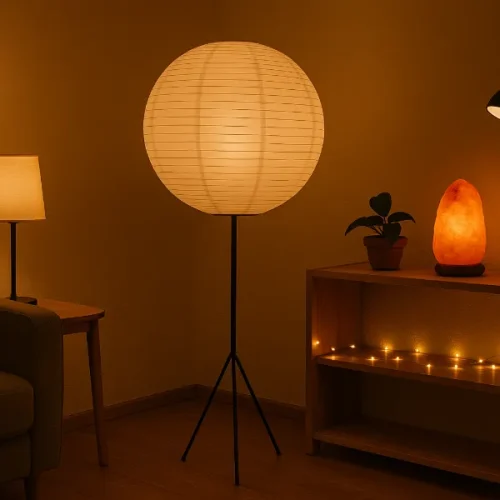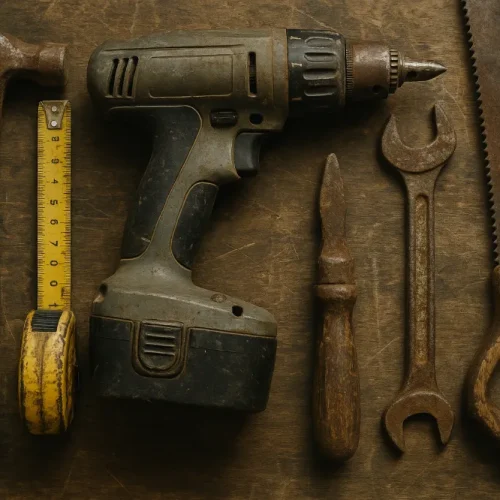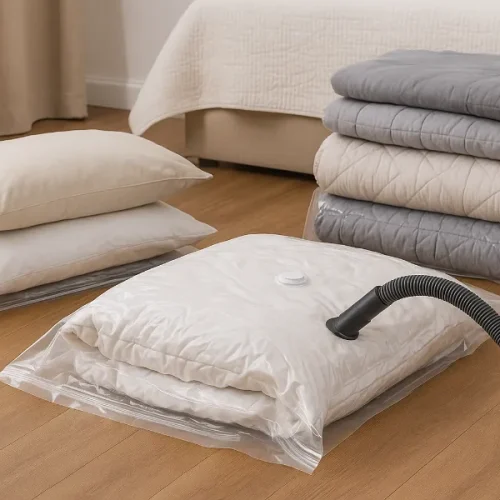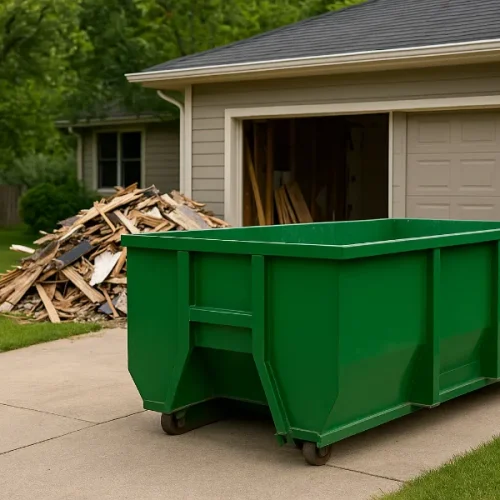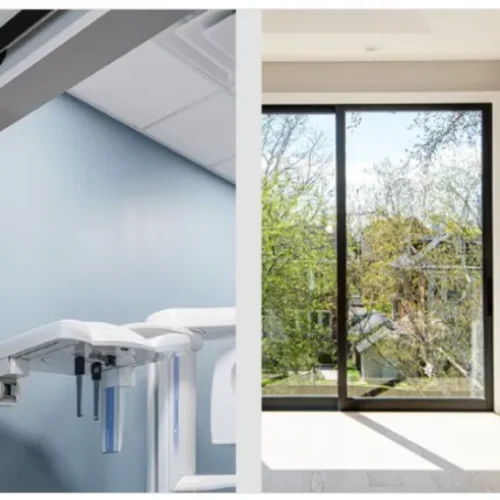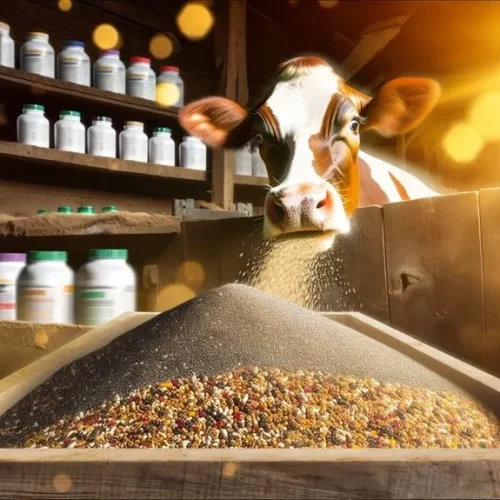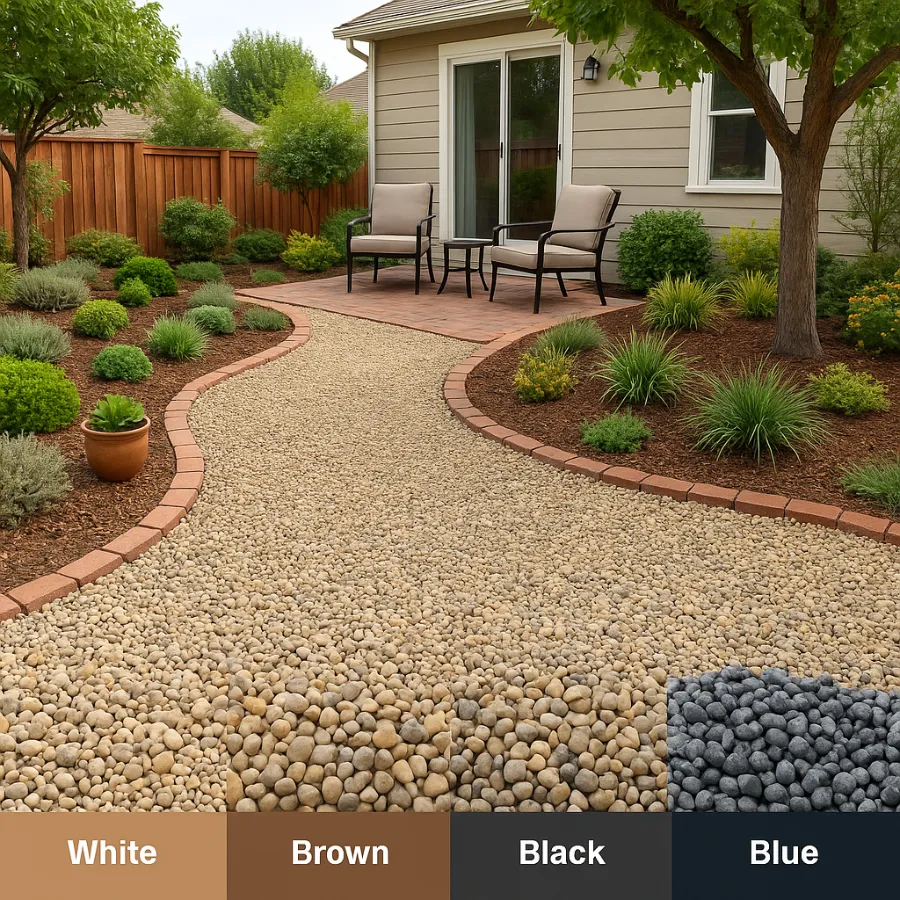
Pea gravel colors might seem like a small detail at first glance, but they can completely transform the mood and style of your outdoor space. From crisp white to bold red to earthy multi-colored mixes, the right pea gravel shade sets the tone for your garden, patio, or walkway. Whether you’re aiming for a sleek modern vibe, a cozy rustic feel, or something in between, choosing the right pea gravel colors can make all the difference.
Let’s dive into the most popular colors, their uses, and how you can mix and match them for maximum effect.
Popular Pea Gravel Colors
White Pea Gravel
White pea gravel brings a clean, modern, and minimalist aesthetic. It pairs beautifully with contemporary homes and sleek outdoor furniture. Often made from crushed dolomite, limestone, or marble, white pea gravel brightens spaces and creates striking contrast with greenery. Just note—it shows dirt more easily than darker shades, so it may need occasional rinsing to keep it crisp.
Brown Pea Gravel
Brown is one of the most widely available pea gravel colors. It usually comes in a mix of warm shades—tan, golden, orange-brown, and even reddish undertones. Brown gravel is perfect for rustic, farmhouse, or natural-style landscapes. It blends seamlessly with wooden accents, stone walls, and cottage gardens. Avoid pairing it directly with gray exteriors, though, as the warm and cool undertones can clash.
Black Pea Gravel
Looking for drama and sophistication? Black pea gravel is a standout choice. Available in variations from deep midnight black to softer charcoal, it works well in both traditional and ultra-modern designs. Black gravel is also easier to keep clean compared to white. Keep in mind, however, that it absorbs more heat, which could stress shallow-rooted plants in hot climates.
Gray Pea Gravel
Gray pea gravel is the classic choice for driveways, pathways, and large-scale functional landscaping. It ranges from light silvery tones to deep charcoal. While not as warm as brown or as bold as black, gray offers neutrality and durability. It’s practical, budget-friendly, and versatile, though it doesn’t provide as much visual “pop” in a garden setting.
Red Pea Gravel
Red pea gravel makes a strong statement. Ranging from muted maroon to fiery brick-red, it’s excellent for Southwestern, Mediterranean, or desert-inspired landscapes. Use softer reds for large areas and save the bright shades for accent borders or potted arrangements.
Green Pea Gravel
Green pea gravel comes in shades from subtle seafoam mixes to bold polished emerald tones. It harmonizes naturally with lawns, shrubs, and trees. Subtle greens work best for blending in with plant-heavy gardens, while brighter greens add personality and uniqueness.
Yellow Pea Gravel
Yellow pea gravel brings warmth and brightness. Shades can range from golden yellow to pale cream. This color pairs well with jewel-toned flowers, terracotta pots, and Mediterranean designs. Softer yellows are better for large ground covers, while rich golden tones shine as highlights in beds and borders.
Blue Pea Gravel
Blue pea gravel works wonders around water features like fountains, ponds, or pools. Shades vary from deep navy to bright turquoise, giving you control over whether you want a bold accent or a calming background. Pairing blue gravel with aquatic plants creates a natural, serene effect.
Purple Pea Gravel
Purple is less common but makes for striking ornamental accents. Shades like lavender, amethyst, or periwinkle can be sourced from specialty suppliers. Purple gravel is fantastic for seasonal highlights, like mixing with orange mums in the fall.
Multi-Colored and Rainbow Mixes
If you don’t want to commit to a single shade, multi-colored gravel is your best bet. Many mixes combine warm and cool neutrals, allowing them to match just about any home exterior or seasonal planting. Rainbow mixes, meanwhile, bring a playful, eclectic touch that keeps your garden looking lively even in winter.
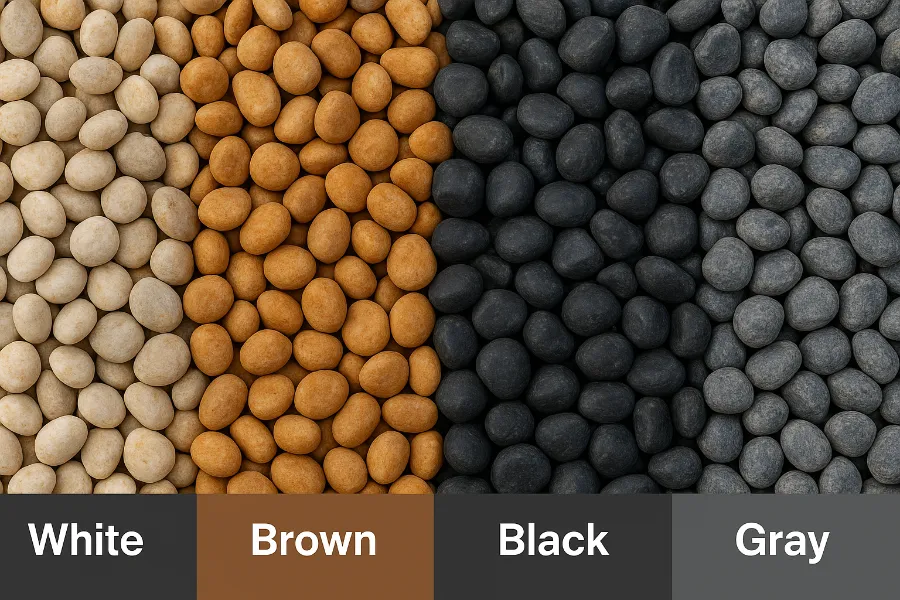
Choosing the Right Pea Gravel Color
When deciding on pea gravel colors, keep these factors in mind:
- House color: Warm exteriors (tan, beige, brick) pair best with warm gravel shades like brown, red, or yellow. Cool-toned houses (gray, blue, white) look better with gray, black, or green.
- Plants and landscaping: Neutral gravels let colorful flowers shine, while bold gravel colors can double as focal points.
- Mood: Want modern minimalism? White or black. Cozy and rustic? Brown or red. Whimsical? Rainbow or multi-colored mixes.
Pea Gravel Sizes and Their Effect on Appearance
Pea gravel isn’t just about color—size matters too.
- Small pea gravel (3/16″) – Smooth, compact look, best for low-traffic or decorative areas.
- Standard pea gravel (3/8″) – The “true” size, ideal for patios, pathways, and general landscaping.
- Large pea gravel (up to 1/2″) – Great for driveways and high-traffic zones where stability is important.
Smaller stones give a softer texture, while larger stones create a more rugged appearance.
Design Ideas Using Pea Gravel Colors
- Pathways: Use brown or gray for a natural, understated look. Edge with wood or stone for definition.
- Patios: Mix pea gravel with pavers or bricks for visual contrast and stability.
- Zen Gardens: White or gray pea gravel raked around boulders creates tranquility.
- Dog Runs: Brown or gray provide good drainage and comfort for pets.
- Water Features: Blue, green, or multi-colored mixes enhance ponds, fountains, and streams.
Pros and Cons of Different Pea Gravel Colors
- White: Bright, modern, but shows dirt easily.
- Brown: Warm and rustic, but clashes with gray exteriors.
- Black: Sleek and low-maintenance, but absorbs heat.
- Gray: Practical and affordable, but lacks warmth.
- Red: Bold and eye-catching, but best in moderation.
- Green/Blue/Purple: Unique and vibrant, but often pricier and harder to find.
- Multi-colored: Versatile and forgiving, but less uniform.
Installation and Maintenance Tips
- Install a weed barrier – Prevents unwanted growth.
- Use edging materials – Keeps gravel contained.
- Spread evenly at 2–3 inches thick – Ensures stability.
- Compact the surface – Walk or tamp it down for firmness.
- Rake and top up occasionally – Keeps it looking fresh.
Pro tip: For potted plants, add a layer of pea gravel at the bottom for extra drainage.
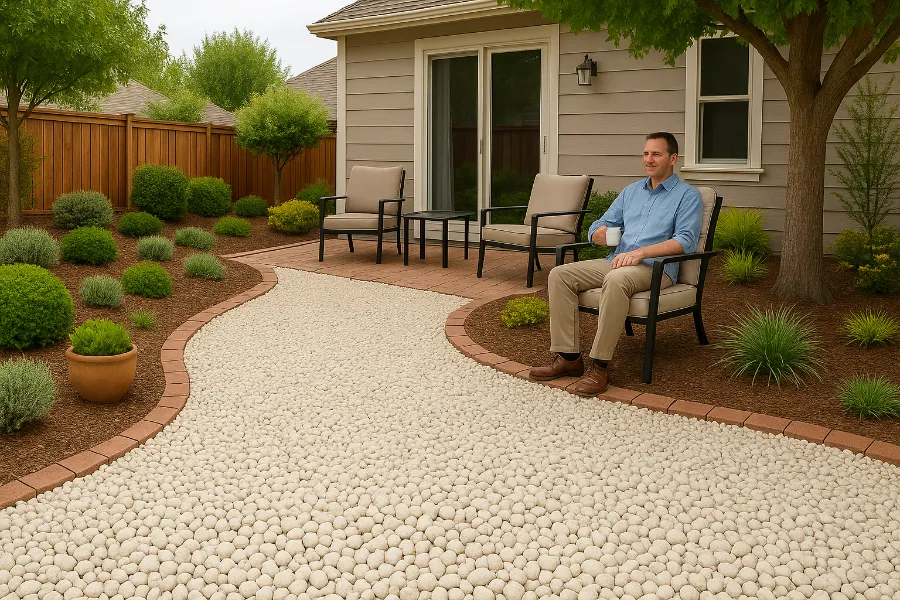
Conclusion
Pea gravel colors offer endless creative opportunities for landscaping. Whether you choose crisp white, earthy brown, dramatic black, or a playful rainbow mix, the right shade helps tie together your entire outdoor design. With thoughtful selection and a little maintenance, pea gravel can give your yard a polished yet natural look that lasts for years.
So don’t treat gravel as an afterthought. Lean into its colors, play with contrasts, and use it as the foundation for a stunning outdoor space.



